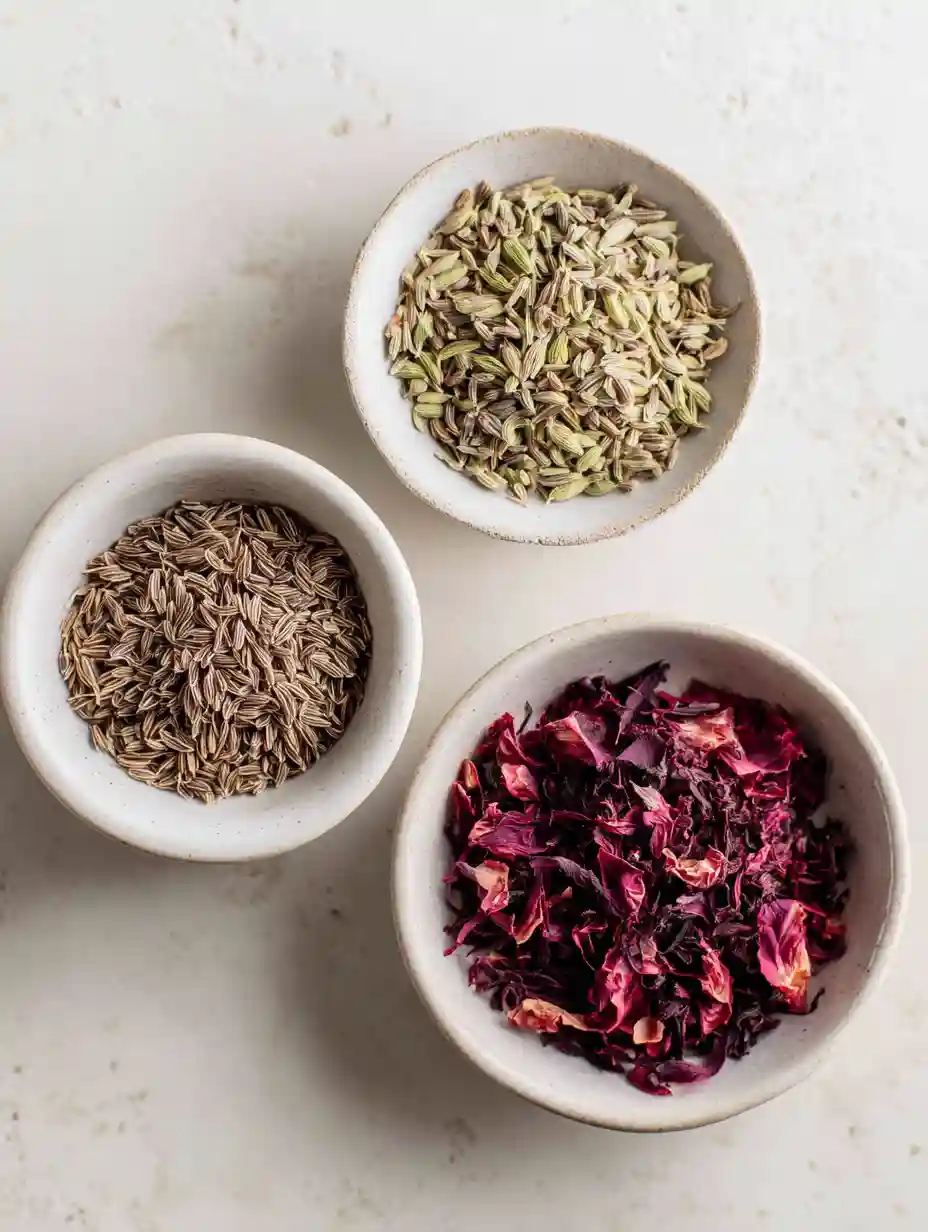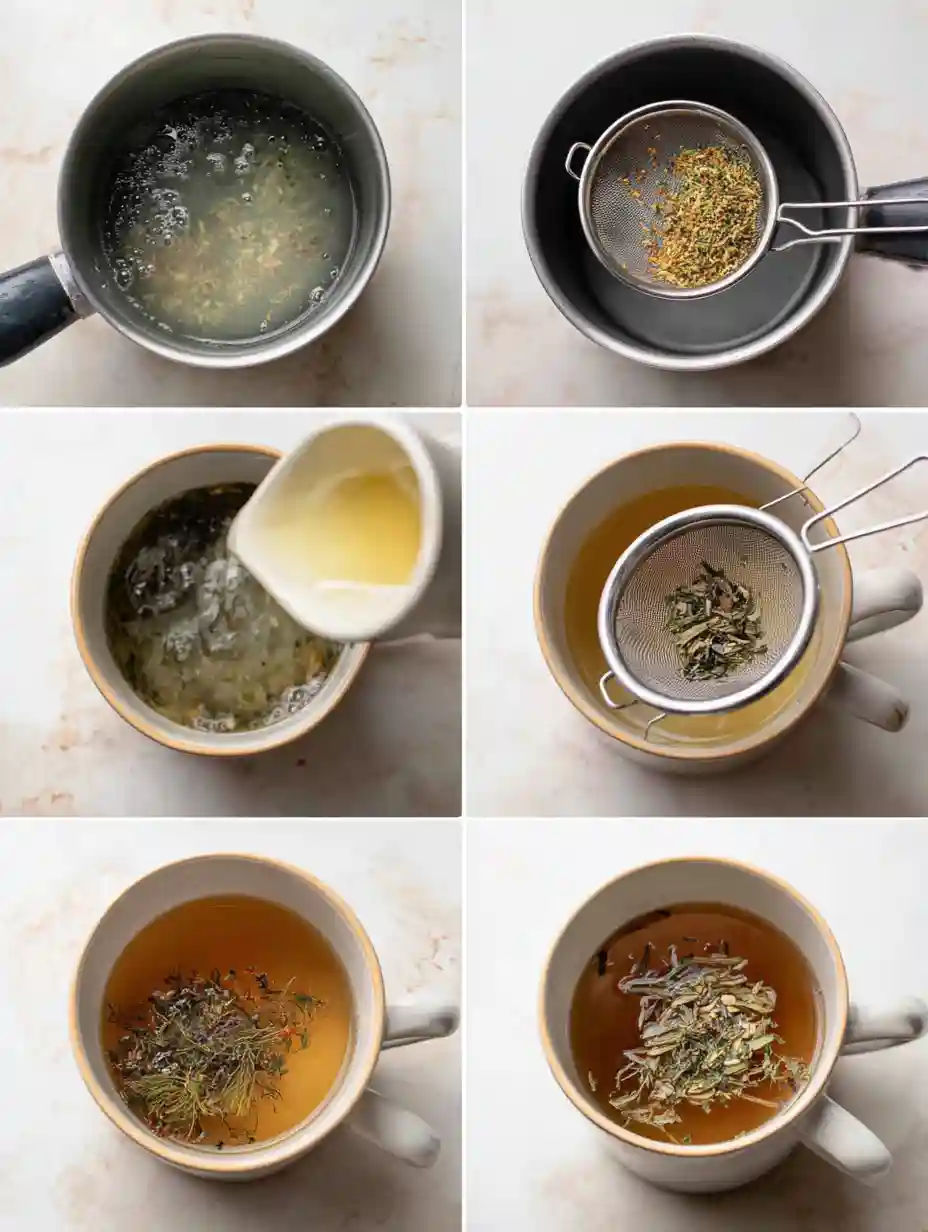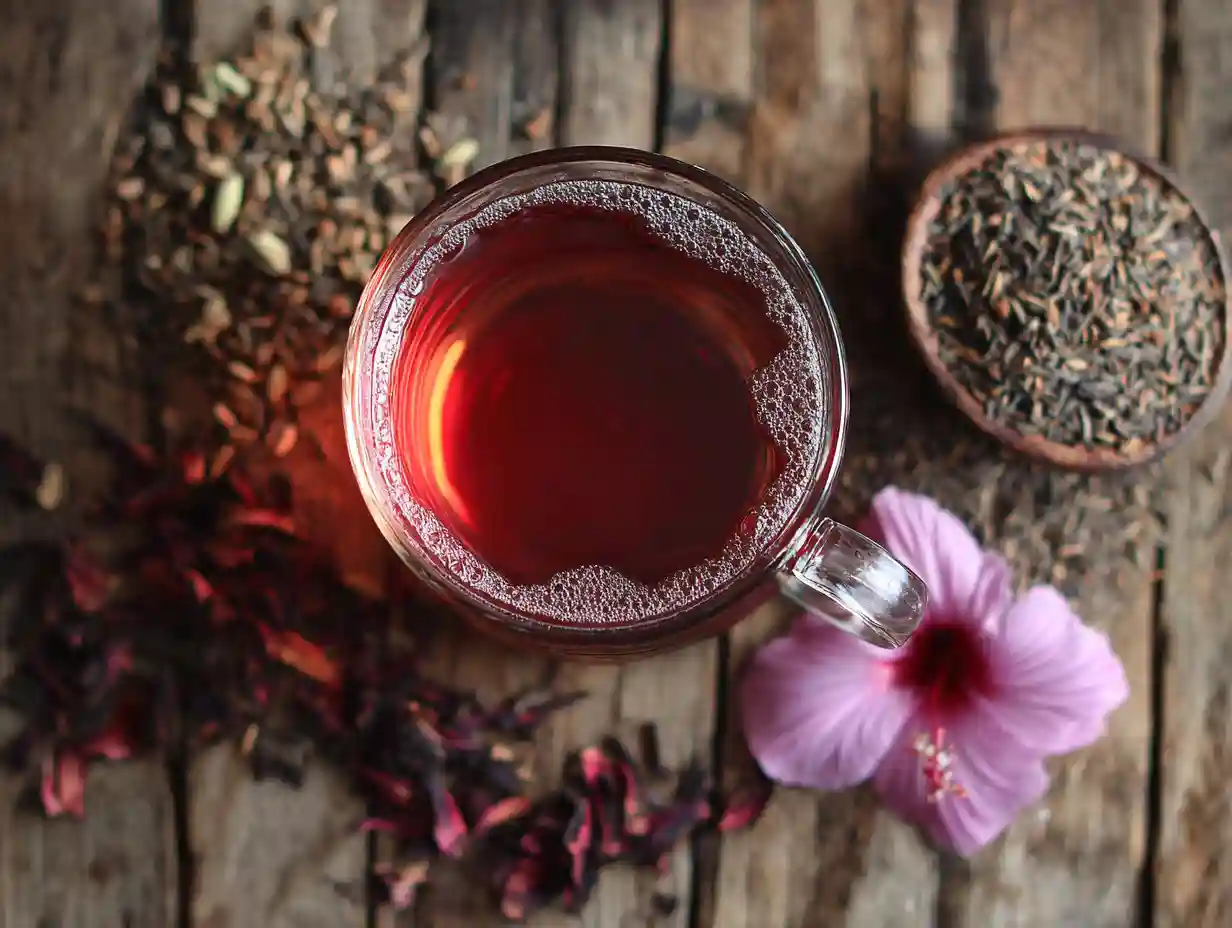Introduction
I first brewed this bariatric tea recipe during a season when everything felt heavy—emotionally and physically. I’d just started easing back into the kitchen after years of rushed meals and fatigue. One morning, a friend shared her homemade herbal blend. I sipped it slowly—warm ginger, lemon, and green tea dancing in the steam—and something shifted. My bloating eased. I felt lighter, clearer. It wasn’t magic—it was just mindful nourishment. This tea became my daily ritual: gentle, detoxifying, and honest. Whether you’re recovering from bariatric surgery or simply craving something to calm your system, this easy blend supports digestion, hydration, and metabolism without overwhelming your body. Here’s how to make it part of your journey.
Why Bariatric Tea Helps After Weight Loss Surgery
After bariatric surgery, digestion slows, cravings spike, and hydration can be difficult. A warm bariatric tea recipe helps ease these challenges naturally.
Ingredients like ginger, fennel, or cumin soothe the gut, reduce bloating, and support nutrient absorption. Green tea and carom seeds gently boost metabolism, making this tea a smart, low-stress aid for post-op recovery.
From my own experience, sipping this tea between meals curbed my snacking and brought calm focus back into my routine. It’s not just a drink—it’s a healing ritual that hydrates, nourishes, and supports lasting results.
Top Health Benefits of Bariatric Tea
This simple bariatric tea recipe supports the body in three powerful ways: digestion, metabolism, and hydration.
1. Eases Digestion
Ginger, fennel, and carom seeds reduce bloating, gas, and stomach discomfort—especially helpful after weight loss surgery when the digestive system is more sensitive.
2. Supports Metabolism
Green tea and cumin offer natural compounds that can mildly increase your body’s fat-burning process. They’re ideal for those looking to maintain or continue weight loss in a natural, non-stimulating way.
3. Boosts Hydration
After bariatric surgery, many patients struggle to drink plain water. Herbal teas offer a flavorful alternative that encourages consistent fluid intake without added sugars or artificial ingredients.
When enjoyed regularly, this tea becomes a low-effort wellness habit that fits seamlessly into post-op routines.
Key Benefits of Bariatric Tea Recipe
Drinking a bariatric tea recipe regularly can offer a range of health benefits, especially for individuals who have undergone weight loss surgery or are following a post-bariatric lifestyle. The blend is crafted to support digestion, metabolism, and hydration—all of which are essential during and after significant dietary transitions.
One of the most powerful effects of bariatric tea is its digestive support. After surgery, the gastrointestinal system is more sensitive, and certain ingredients—like fennel seeds, ginger, or hibiscus—help reduce bloating, gas, and inflammation. These herbs also encourage smoother digestion, which is crucial for nutrient absorption in bariatric patients.
Another key benefit is natural metabolism support. Many bariatric teas include thermogenic ingredients like green tea or cumin, which may gently raise your metabolic rate and promote fat oxidation. For more inspiration, explore this Brazilian Mounjaro natural weight loss drink featuring traditional slimming ingredients.
The hydration boost is also vital. After surgery, patients must stay hydrated but may find plain water difficult to tolerate. Herbal bariatric teas offer a flavorful, low-calorie way to keep fluid levels up while avoiding added sugars or artificial sweeteners.
Moreover, this tea can be a mindful ritual that reinforces healthy habits. Sipping warm, nourishing tea instead of snacking between meals helps regulate appetite and promotes a calm, focused mindset. Over time, this simple habit becomes part of a sustainable, post-op wellness routine.
Lastly, bariatric tea is versatile and affordable. With just three core ingredients, you can prepare a batch at home in minutes—making it easy to integrate into your daily schedule.
Print
Bariatric Tea Recipe
- Total Time: 10 minutes
- Yield: 1 serving
- Diet: Low Calorie
Description
This bariatric tea recipe is a light, 3-ingredient detox drink that supports digestion, hydration, and weight loss.
Ingredients
- 1 tsp green tea leaves (or 1 tea bag)
- 3–4 slices fresh ginger
- 1 tbsp fresh lemon juice
Instructions
1. Bring 1 cup of water to a gentle boil.
2. Add green tea and ginger slices; steep 3–5 minutes.
3. Remove tea leaves and ginger.
4. Stir in lemon juice before serving.
Notes
For a caffeine-free version, replace green tea with peppermint or chamomile.
Best enjoyed between meals for optimal digestion.
- Prep Time: 5 minutes
- Cook Time: 5 minutes
- Category: Tea
- Method: Steeping
- Cuisine: Bariatric Friendly
Next, let’s walk through the simple ingredients you’ll need to make your own healing bariatric tea.

Bariatric Tea Recipe (3 Ingredients)
This easy bariatric tea recipe takes just 10 minutes and uses only three simple ingredients. It’s gentle on the stomach, naturally detoxifying, and perfect for boosting hydration and metabolism—without overwhelming your system.
| Ingredient | Amount |
|---|---|
| Green tea leaves (or 1 tea bag) | 1 tsp |
| Fresh ginger, sliced | 3–4 slices |
| Fresh lemon juice | 1 tbsp |
Instructions:
- Bring 1 cup of water to a gentle boil.
- Add green tea and ginger slices; steep for 3–5 minutes.
- Remove the tea leaves and ginger.
- Stir in lemon juice and serve warm.
Pro Tip:
If you’re sensitive to caffeine, swap green tea for caffeine-free herbal options like peppermint or chamomile.
Bariatric Seed Ritual Tea
Seed-based teas are a soothing, caffeine-free option for bariatric recovery. This blend uses fennel, cumin, and carom seeds—all known for aiding digestion, reducing bloating, and calming the gut.
| Ingredient | Amount |
|---|---|
| Fennel seeds | 1 tsp |
| Cumin seeds | ½ tsp |
| Carom seeds (ajwain) | ½ tsp |
Instructions:
- Bring 2 cups of water to a boil in a small pot.
- Add fennel, cumin, and carom seeds.
- Simmer for 5–7 minutes to extract their oils.
- Strain and enjoy warm, preferably between meals.
Pro Tip:
Lightly toast the seeds in a dry pan before boiling. This enhances flavor and boosts the tea’s digestive properties.
Pink Salt Bariatric Detox Tea
This variation uses pink Himalayan salt to deliver trace minerals and support gentle hydration. Combined with lemon and warm water, it’s ideal for morning routines and digestion support after surgery.
| Ingredient | Amount |
|---|---|
| Warm water | 1 cup |
| Pink Himalayan salt | ¼ tsp |
| Fresh lemon juice | 1 tbsp |
Instructions:
- Heat one cup of water until warm but not boiling.
- Stir in pink Himalayan salt until fully dissolved.
- Add lemon juice, mix, and drink slowly.
Pro Tip:
Drink this first thing in the morning to help rehydrate after sleep and support your digestive system’s natural rhythms.

Pro Tips and Flavor Variations for Bariatric Tea Recipe
Whether you’re just starting your post-bariatric journey or refining your routine, a few smart adjustments can enhance both flavor and function. These tips are based on real-world experience and digestive wellness principles.
Pro Tips
- Use whole seeds for maximum potency
Whole fennel and cumin preserve their natural oils and potency better than pre-ground forms. Store them in airtight containers away from sunlight. - Simmer, don’t boil delicate herbs
Herbs like hibiscus become overly sour if boiled. A gentle simmer preserves taste and antioxidants. - Drink between meals, not during
Sipping tea between meals helps digestion and prevents dilution of stomach acid needed for nutrient absorption. - Prep in advance for convenience
Make larger batches and store in glass jars. Drink chilled or gently warmed throughout the week. - Use filtered water for cleaner taste
Good-quality water enhances both the flavor and detox value of your tea.
Flavor Variations
- Add ginger for extra warmth
Boosts anti-inflammatory benefits and helps soothe the stomach. - Brighten with lemon peel or juice
Offers a vitamin C kick and refreshing citrus flavor. - Swap hibiscus for dried rose petals
A floral option that’s gentler in taste but still supports digestion. - Infuse with fresh mint
Add after brewing for a cool, refreshing note—perfect for iced tea. - Include a pinch of turmeric
Complements cumin and supports anti-inflammatory goals without overpowering the tea.

Serving Suggestions for Bariatric Tea Recipe
How and when you drink your bariatric tea recipe can impact digestion, hydration, and long-term results. Here are easy ways to make the most of each cup.
Start Your Day Warm
Enjoy a warm cup first thing in the morning to softly stimulate your digestive system. It supports hydration, soothes the gut, and helps prepare your body for the day ahead. For a complete morning routine, try it alongside our anti-inflammatory breakfast bowl.
Sip Between Meals
Avoid drinking tea with food—it can dilute stomach acid and hinder digestion. Instead, sip between meals to curb cravings and support better nutrient absorption.
Enjoy It Cold
Prefer cold drinks? Allow the tea to cool fully, then refrigerate it for later use. Pour over ice and garnish with mint leaves or a slice of lemon. For another refreshing option, try our raspberry peach chia seed smoothie.
Take It On the Go
Use a thermal bottle to bring your tea to work, the gym, or errands. This keeps it fresh and helps build consistency.
Pair With Protein
To keep energy levels stable, pair your tea with protein-rich snacks—like a boiled egg, a mini shake, or whole-grain toast with cottage cheese. Or go for a naturally sweet boost with our tram sauce smoothie recipe.
Make It a Mindful Habit
Choose a favorite mug, sit for a few minutes, and sip slowly. This mindful routine helps reduce stress, improve digestion, and strengthen healthy habits.
Conclusion
Adding a bariatric tea recipe to your daily routine is one of the simplest ways to support long-term wellness. With just a few natural ingredients, you gain digestive relief, improved hydration, and gentle metabolism support.
This tea isn’t just a drink—it’s a daily practice that replaces sugary options with something light, healing, and sustainable. Whether you sip it warm in the morning or chilled in the afternoon, it adapts to your lifestyle with ease.
By making this tea a steady part of your day, you create a habit that nourishes your body and keeps you aligned with your weight loss goals. Small, consistent choices like this are what build lasting results.
Now, let’s answer some of the most common questions about bariatric tea to help you feel confident and informed before you start brewing.
Share this recipe with someone starting their weight loss journey, and explore our Pink Salt Water Trick Recipe and Tram Sauce Recipe for more wellness inspiration. or browse our collection of comforting Main Dishes to balance your day.
FAQs About Bariatric Tea Recipe
Yes. Bariatric tea blends natural ingredients like cumin, fennel, and hibiscus, which support digestion, hydration, and metabolism, making it ideal for weight loss.
Absolutely. A simple version uses green tea, ginger, and lemon juice for quick preparation with cleansing and metabolism-boosting properties.
Fennel, cumin, and carom seeds are common. They aid digestion, reduce bloating, and provide essential trace minerals to support overall wellness.
Yes, most versions are safe to drink daily. For best results, enjoy it between meals and avoid adding sweeteners or heavy additives.


3 thoughts on “Bariatric Tea Recipe That Melts Belly Fat Naturally”